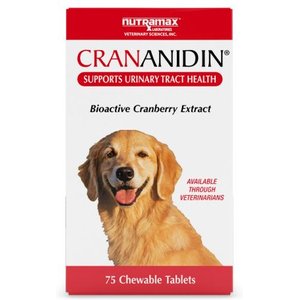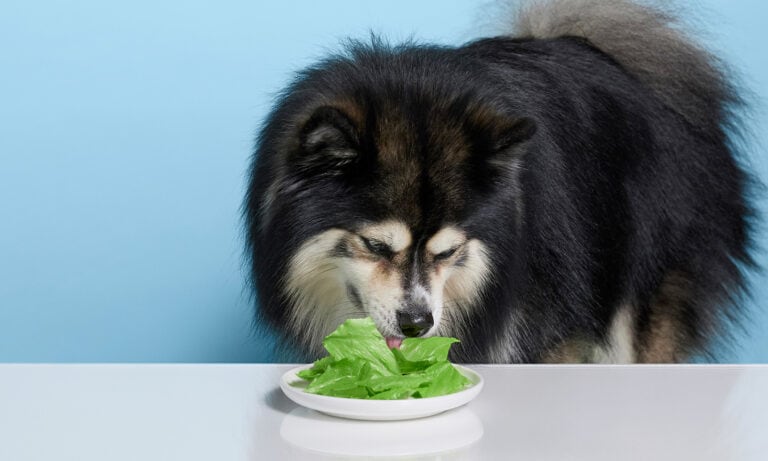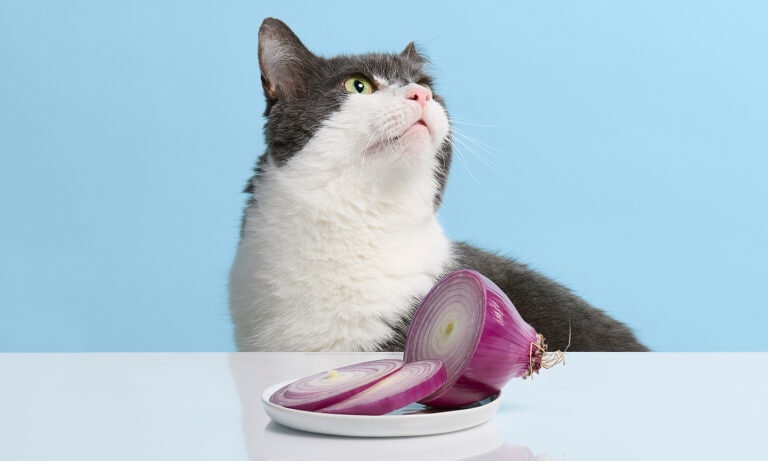Every fall, cranberries reach their peak and are ready for harvesting. This Thanksgiving staple is a key ingredient in so many holiday meals and desserts, making its way into succulent pies, savory stuffing, and seasonal sauces. They’re often considered a superfood for humans because they’re high in antioxidants, prebiotic fibers—which are dietary fibers that feed the healthy bacteria in your gut—and other vitamins. But can dogs eat cranberries?
Yes! Dogs can eat cranberries.
We spoke with a veterinarian and a pet nutritionist to get the full scoop on cranberries, including the many health benefits, how to safely feed cranberries to your dog, and more.
Before introducing any new food into your dog's diet, always check with your veterinarian.
In This Guide:
Are Cranberries Good for Dogs?
Cranberries are not only safe for dogs, but they boast several benefits.
Here are the health benefits of cranberries:
- They’re a great source of antioxidants.
- They’re high in quercetin, a plant pigment and natural anti-inflammatory that can help boost the immune system.
- They contain proanthocyanidins (PACs), which are naturally occurring chemical compounds that give fruit their red, blue, or purple color, and “prevent bacteria from adhering to the bladder walls, which may help in preventing urinary tract infections (UTIs),” says Johnna Devereaux, a certified clinical pet nutritionist and director of Bow Wow Labs® Inc.
- They’re low in potassium “and can be beneficial for dogs with kidney issues,” Devereaux says.
- They’re a great source of fiber, which can help keep your pup fuller for longer. That’s a huge plus if you’re trying to help your dog manage their weight.
- They full of vitamins and minerals, including:
- Vitamin B1
- Vitamin B2
- Vitamin C
- Vitamin E
- Vitamin K
- Copper
- Manganese
Are Cranberries Bad for Dogs?
No, cranberries are usually not bad for dogs. While they’re a delicious, healthy treat in some forms, pet parents should avoid feeding their furry friends the following kinds of cranberry products:
- Canned cranberries: Canned cranberries are often high in sugar, and too much sugar can cause gastrointestinal (GI) upset in dogs, including vomiting or diarrhea. Canned cranberries may also contain other toxic ingredients such as grapes, raisins, or currants, which “can cause injury to your dog’s kidneys,” says Albert Ahn, DVM, president of AB Science USA in Chatham, New Jersey.
- Cranberry juice: It’s also important to avoid cranberry juice because of the added sugar and high fructose corn syrup—two things your pup definitely doesn’t need in their diet, says Dr. Ahn.
- Cranberry sauce: While not toxic to dogs, cranberry sauce is also on the no-feed list because it also contains a lot of sugar, which, as we’ve learned, can make your dog feel sick. Cranberry sauce may also include dangerous ingredients for dogs, like grapes and raisins.
Whole, fresh cranberries may also be a choking hazard for small dogs, so it’s best to cut them into small, bite-size pieces (into halves or quarters) when feeding to small-breed dogs.
Cranberries are highly acidic and may cause your dog to have heartburn (acid reflux).
Also, frozen cranberries can damage a dog’s teeth when they’re chewing them, so be sure to thaw them before serving.
How Many Cranberries Can I Give My Dog?
Cranberries should be treated as, well, a treat. And treats should be fed in moderation, making up no more than 10% of the total calories of your dog’s daily diet, with the rest coming from a complete and well-balanced dog food.
If your dog has never had cranberries before, take the “low and slow” approach, Devereaux says. Start with a small amount and see how your dog reacts to the treat. If they show they don’t like it or show signs of illness, stop feeding your dog cranberries.
Here are some general serving guidelines for cranberries for dogs based on their size, but your vet can also tell you how many cranberries to feed your dog based on their age, breed, and caloric requirements.
Extra-small dog (2–20 pounds)
1–2 cranberries
Small dog (21–30 pounds)
2–3 cranberries
Medium dog (31–50 pounds)
5–6 cranberries
Large dog (51–90 pounds)
8–10 cranberries
Extra-large dog (91+ pounds)
10–15 cranberries
How To Safely Feed Your Dog Cranberries

Here are some tips for preparing cranberries for dogs:
- Opt for fresh, plain cranberries. It’s best to give your dog fresh cranberries when they’re in season. You can serve frozen cranberries as long as they’re defrosted, Devereaux says. Frozen cranberries are hard enough that they can damage a dog’s teeth when they’re chewing them. Dried cranberries are OK, too, as long as they’re all-natural and unsweetened.
- Wash them. Wash the cranberries like you would with any fresh fruit.
- Cut into small pieces. Even though fresh cranberries are small, it’s best to cut them into halves or quarters when feeding them to small-breed dogs, as they may be a choking hazard.
As for how to serve dogs cranberries, you can either give them fresh as treats, or you can mix them into their food.
Cranberry Dog Treat Recipes
But the most fun way to serve cranberries to dogs? In a homemade dog treat!
Here are some of our favorite dog treat recipes that feature cranberries:
Store-Bought Cranberry Dog Treats
You can also shop dog treats that contain cranberries. Our favorites include:
Other Cranberry Products for Dogs
If your dog struggles with UTIs, feeding a few cranberries every day may not give them quite enough PACs to help. Different varieties of cranberries can have varying amounts of PACs.
For a more reliable source of PACs, ask your vet about animal health products (sometimes called supplements) that contain PACs, like Crananidin® Crananidin is a scientifically formulated cranberry extract product that contains PACs in a dosage that supports urinary tract and bladder health.
My Dog Ate Too Many Cranberries—What Should I Do?
But keep an eye on your dog, because too many cranberries can cause an upset stomach.
Signs of gastrointestinal distress include:
- Diarrhea
- Vomiting
- Abdominal pain
- Loss of appetite
- Lethargy
Contact your veterinarian if you notice any of those symptoms.
When To Check With Your Vet
Remember, it’s always a good idea to consult your vet before incorporating any new foods into your dog’s diet, especially if they have any underlying health conditions.
Cranberries, for example, can cause complications for dogs who are prone to calcium oxalate stones (a kind of bladder stone), Devereaux says.
FAQs About Cranberries and Dogs
Q:Can dogs eat cranberry sauce?
A:No, dogs cannot eat cranberry sauce due to its high sugar content and possible inclusion of toxic ingredients like grapes and currants.
Q:Can dogs have dried cranberries?
A:Yes, dogs can eat dried cranberries, as long as they’re all-natural and unsweetened. Some dried cranberries may have added sugars or artificial sweeteners such as xylitol, which is toxic to dogs.
Q:Can dogs eat Craisins®?
A:Yes, dogs can eat Craisins, which are just dried cranberries. However, dogs should only have unsweetened Craisins—so check the label before serving!
Q:Can dogs have Ocean Spray® cranberry juice?
A:No, dogs cannot have Ocean Spray cranberry juice. That’s because cranberry juice, including cranberry juice mixes and cocktails, contain high amounts of sugar and may even contain grape juice, which is toxic to dogs.
Q:Can cranberries help dogs with UTIs?
A:Yes, cranberries contain proanthocyanidins (PACs), which support proper urinary tract and bladder function. However, keep in mind that the amount of PACs can vary depending on the variety of fruit. Animal health products like Crananidin provide a more measured, reliable source of cranberry-derived PACs.
Animal health products are good for maintaining urinary tract health; however, you should see your vet as soon as possible if you suspect that your pup has a urinary or bladder infection.
Share:

















